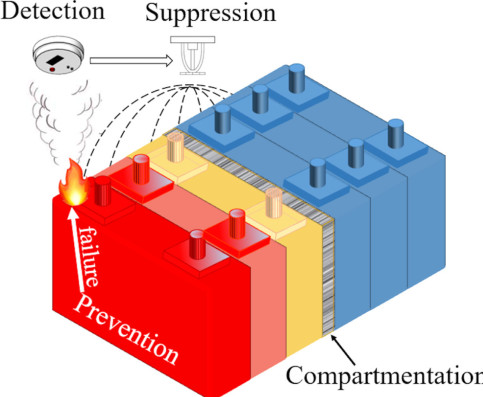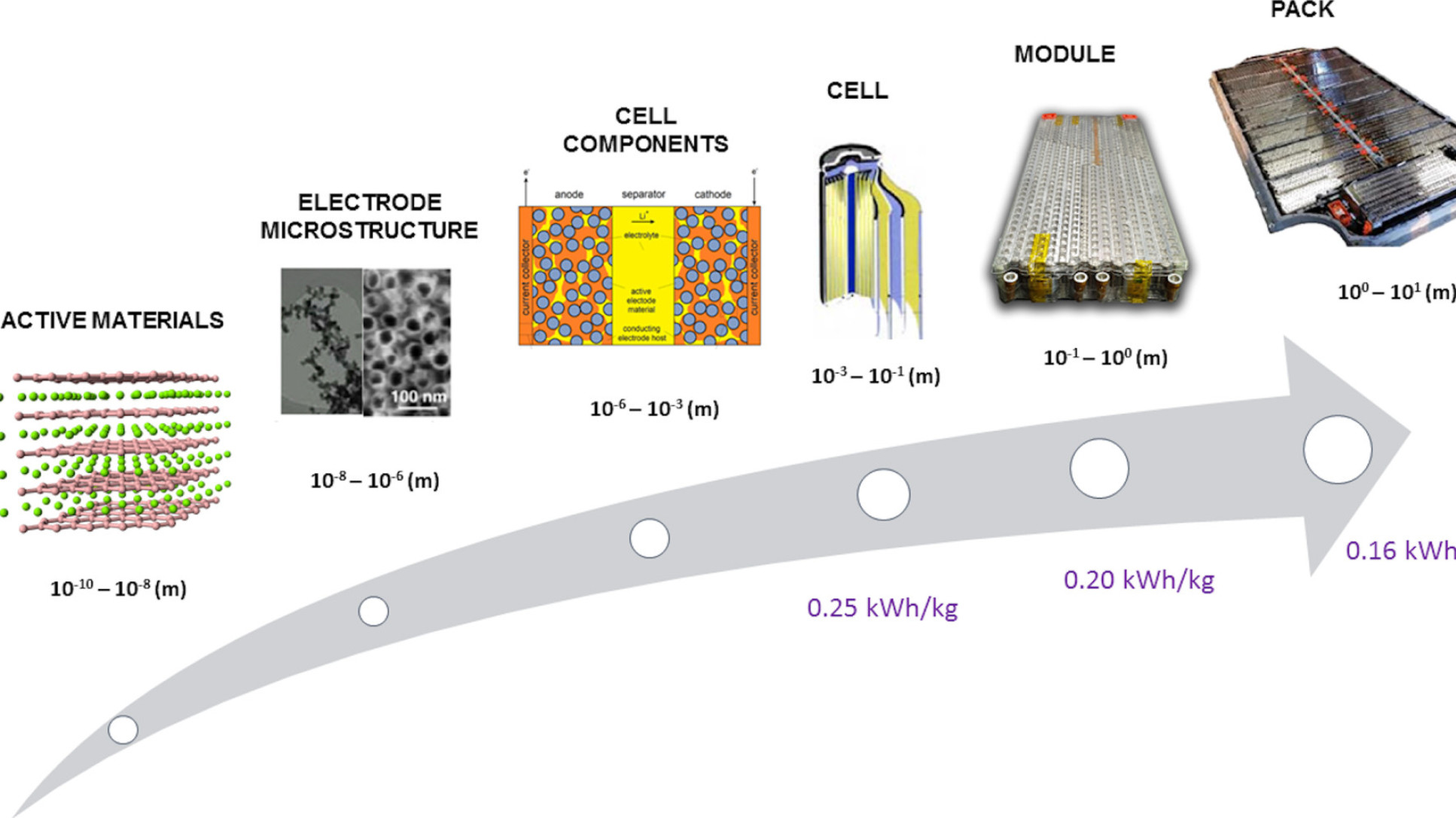Battery fires: Industry and research must work together for safer batteries
Fire safety issues with lithium-ion batteries could be addressed with better collaboration across sectors, Imperial College London experts have said.
According to a new review paper, published in Journal of The Electrochemical Society, industry leaders feel that battery safety standards do not represent real-world scenarios that could cause fires and are therefore not robust enough to prevent, detect, and suppress battery fires.
The distinction between the approaches of industry and research mean they are not yet aligned enough make batteries as safe as possible. Dr Greg Offer Department of Mechanical Engineering
The authors argue that better alignment of research and industry could address this gap and help to reduce the likelihood of and damage from battery fires.
Lithium-ion batteries power our smartphones, laptops, and many rechargeable gadgets. They are also a key technology for decarbonised sustainable energy and are used in electric vehicles and smart grids.
However, many types of lithium-ion battery display a tendency to ignite or release gases. Although statistically rare, battery fires can spread faster and last longer than other fires, release more toxic chemicals, and be harder to suppress.
The Imperial researchers say they worry that the most pressing safety problems faced by battery companies are not readily answered by the scientific research currently being conducted, and that several safety elements that can be added to batteries are not being considered because of this lack of integration between industry and research.

Senior author Dr Greg Offer of Imperial’s Department of Mechanical Engineering said: “The popularity of these batteries is booming, and industry and scientists naturally share the common goal of producing safer batteries. However the distinction between their approaches mean that industry and research are not yet aligned enough make batteries as safe as possible.”
Differing approaches
We researchers need to address this research gap by using larger-scale studies on battery safety – and we also need to collaborate more with industry. Xuanze He Department of Mechanical Engineering
In their review, the researchers collected views from a wide range of battery companies about the fire safety challenges they face, and analysed and compared them to top contributions to the field from scientific literature.
They found that battery companies were mainly concerned about battery safety, and the need for improved standards and regulations. While there are several recognised international standards for many industries of lithium-ion batteries, a major shared concern is that the available standards are not always representative of real-world scenarios. For example, regulations dictate that electric vehicles are tested using conditions derived from combustion engine regulations, and are therefore not representative of electric vehicles which use only electricity.
In addition, most current scientific research focuses on the prevention of fires, and the authors argue there is a lack of research focusing on detecting and suppressing them.
Incorporating more real-world research like this into industry standards will help to close the gap between imagined and real-world fire safety scenarios. Laura Bravo Department of Mechanical Engineering
They also found that while industry tends to focus on specific questions at larger scales, like those of overall battery systems, research tends to focus on the fundamental understanding of smaller scale questions, like those of smaller components and cells.
Joint first author Xuanze He of Imperial’s Department of Mechanical Engineering said: “This is problematic because lessons from laboratory studies on smaller components don’t directly translate to large systems in real-world situations. We researchers need to address this research gap by using larger-scale studies on battery safety – and we also need to collaborate more with industry.”
Closing the gap
Lithium-ion batteries are here to stay, so everyone wins when their safety improves. Professor Guillermo Rein Department of Mechanical Engineering
Joint first author Laura Bravo, also of Imperial’s Department of Mechanical Engineering, said: “Perhaps incorporating more real-world research like this into industry standards will help to close the gap between imagined and real-world fire safety scenarios.”
The analysis provides several recommendations that could improve battery safety: firstly, that battery industries embrace more comprehensive fire protection strategies that integrate more safety layers, and secondly that closer collaboration between the battery and fire safety research communities could drive improvements, integration and harmonisation of fire safety across sectors.
Senior author Professor Guillermo Rein of the Department of Mechanical Engineering said: “Lithium-ion batteries are here to stay, so everyone wins when their safety improves. Bringing the battery and fire safety communities together sooner rather than later could prove crucial to solving lithium-ion battery safety issues.”

“Review—Meta-Review of Fire Safety of Lithium-Ion Batteries: Industry Challenges and Research Contributions” by Laura Bravo Diaz, Xuanze He, Zhenwen Hu, Francesco Restuccia, Monica Marinescu, Jorge Varela Barreras, Yatish Patel, Gregory Offer, and Guillermo Rein. Published 17 August 2020 in Journal of The Electrochemical Society.
Credits:
Main image/video: Cognition Energy
Other: Imperial College London
Article text (excluding photos or graphics) © Imperial College London.
Photos and graphics subject to third party copyright used with permission or © Imperial College London.
Reporter
Caroline Brogan
Communications Division